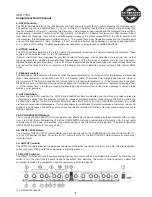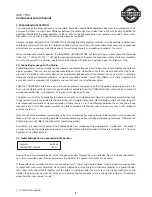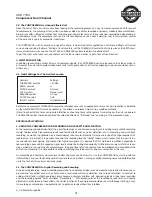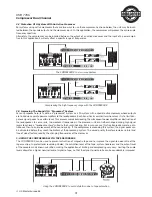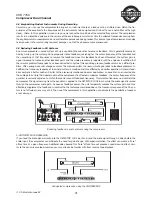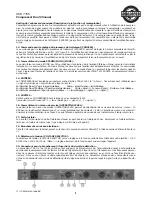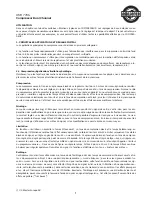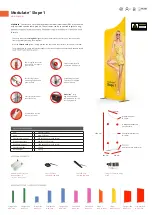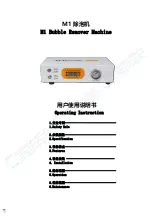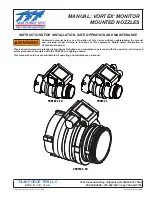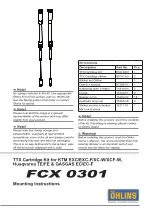
9
USB 7706
Compressor Dual Channel
2.3 Reducing Leakage In Stage Mics
The COMPRESSOR has many uses in live sound re-enforcement, on stage and in multi-miking situations: a well set up
Expander/Gate can effectively suppress background noise, compressor type pumping noise and microphone leakage etc.,
without producing any undesirable side effects.
Expander I gates are commonly used for processing vocals. When specifically used with a compressor, the distance and
position of the mic in relation to the singer is very critical: the further the distance, the more sensitive the mic is to back-
ground noise. When used in live situations, leakage of miked instrumentation is substantially reduced, as well as other
acoustic contaminants in various recording situations.
2.4 Reducing Ambient Sound Pickup and Feedback In Stage Mics
While singing, a singer's voice effectively masks most ambient sounds from entering the mic. But in pauses between the
singing the mic can pick up noise from the house PA and monitors, which can lead to undesired noise and feedback pro-
blems. Using the COMPRESSOR, the mic channel can be shut off when it is not being used, reducing the possibility of
noise pickup and feedback. For best results, all live stage mics should be controlled in this manner.
2.5 Noise Reduction On Effects Paths
The effects rack is one of the main overlooked sources of noise in a PA system or recording facility. The price of reverb,
delay units and harmonizers has fallen drastically over the years, so that now these units are commonly used in even the
smallest studios and home recording installations. However, as multiple effects units considerably increase the overall
noise level, care must be taken to keep the overall accumulated noise level within manageable limits.
Utilizing the noise reduction function of its Expander I Gate section, you will find the COMPRESSOR indispensable as the
last component in the chain of effects units in reducing and eliminating noise in you system.
3. THE COMPRESSOR FUNCTION
The task of a compressor is to reduce the dynamic range of program material and to control the overall level. The exten-
sive controls of the compressor provide a great range of dynamic effects: from musical and 50ft compression to limiting
signal peaks, right up to extreme and effective compression of the overall dynamics. For example, a low ratio and very
low threshold setting can be used to achieve soft and musical processing of the general dynamics of the program mate-
rial. Higher ratios, together with low threshold settings, create relatively constant volume (leveling) for instruments and
vocals. High threshold levels generally
limit the overall level of a program. Ratios greater than 6:1 effectively prevent the output level from significantly excee-
ding the threshold point (provided that the OUTPUT control is in the 0 dB position). (Note: The compression of the enti-
re program material (achieved by low threshold settings) sounds less natural with higher ratio settings. Ratio settings in
the range of 4:1 and lower affect the dynamics of the program material less and are often used to compress the sound
of a bass guitar, a snare drum or a vocal. Sensitive and moderate settings are generally used in mixing and for leveling
of program material in broadcast.)
The AUTO function prevents aggressive compression, created by high ratios, from sounding too unnatural.
3.1 Initial Settings For The Compressor Function
Controls:
Settings:
THRESHOLD control:
+20 dBu
RATIO control:
2.5:1
AUTO switch:
Auto (depressed)
OUTl'UT control:
OdB
IN lOUT switch:
In (depressed)
Rotate the THRESHOLD control counterclockwise until an appropriate amount of gain reduction is indicated on the GAIN
REDUCTION meter. This operation will be accompanied by an audible drop in output level. The OUTPUT control should
now be turned clockwise to reinstate the output level. The level of the unprocessed and the processed signal can be com-
pared by pressing the IN/OUT switch. Final adjustments of the controls can then be made to suit your particular require-
ments, including the RATIO, ATTACK and RELEASE controls, The AUTO function of the attack and release times provides
program dependent dynamic processing which suits most standard uses. If a "condensed" or "wider" sound processing
technique is required, the attack and release times can also be manually adjusted.
The experienced user will be in a position to specify parameters while in bypass mode and thus realize the effect before
the unit is actually switched into operation. This is important in live situations, where a signal needs to be managed effi-
ciently by the sound technician, without the convenience of continual A/B comparison.
© US Blaster Europe BV





